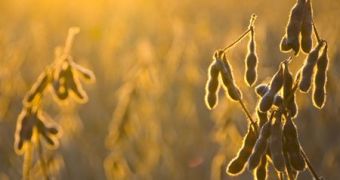This January 14, the World Wildlife Fund (WWF, for short) released a new report saying that, although not many people are aware of this, human society goes through whopping amounts of soy annually.
What's interesting is that, according to the organization, it is not vegans and vegetarians that must be held accountable for the fact that soy production has pretty much gone through the roof over the past years.
On the contrary, it would appear that folks who eat meat on a regular basis are the ones to be pointed the finger at, the WWF writes on its website.
The organization details that, as shown by recent investigations and reports, most of the soy that is currently produced on a global scale is used as animal feed.
Otherwise put, it goes into making pork, chicken and the like. Processed foods are also a driver behind the increase in soy demand documented on a global scale.
Thus, it appears that 75% of the 270 million tonnes of soy produced in the year 2012 alone went into animal feed.
“Think soy is something only vegetarians eat? Think again. Due to a rising demand worldwide for meat products soy, the majority of which is used as animal feed, has become one of the world’s biggest crops,” the WWF writes in a press release.
“We consume more soy than we realize, but it is the soy that goes into pork, chicken and processed foods not the soy in tofu and sauce that is the real issue. More than half a kilogram of soy can be going into a kilogram of chicken,” adds environmentalist Sandra Mulder.
Currently, the overall area of land that is used to grow soy is said to be nearly 10 times bigger than it was just 50 years ago. Besides, it is expected that it will double in size by the year 2050.
What worries the WWF is the fact that this rapid expansion of the soy industry comes at a very hefty cost: the destruction of several natural ecosystems that serve as a home to rare animal and plant species.
“Rapid growth in the demand for soy destined for animal feed is a key driver for clearing significant forests, savanna and grasslands, including the Amazon, Cerrado, Atlantic Forest, Chaco and Chiquitano Forest that cover most of Brazil, Argentina, Bolivia and Paraguay and the North American prairies, and increasing the vulnerability of species that include jaguar, giant anteater, armadillo and macaw,” the organization says.
“Most of us are unaware of just how much soy we consume and what effect it is having on the planet,” it goes on to argue.
In light of these findings, the organization asks that world leaders, producers, retailers and even consumers take steps towards ensuring that soy is produced in a sustainable fashion.
Better land use planning, the protection of vulnerable areas, cutting waste, more efficient agricultural practices and reducing the global consumption of animal proteins are just some of the factors that must be taken into consideration.

 14 DAY TRIAL //
14 DAY TRIAL //